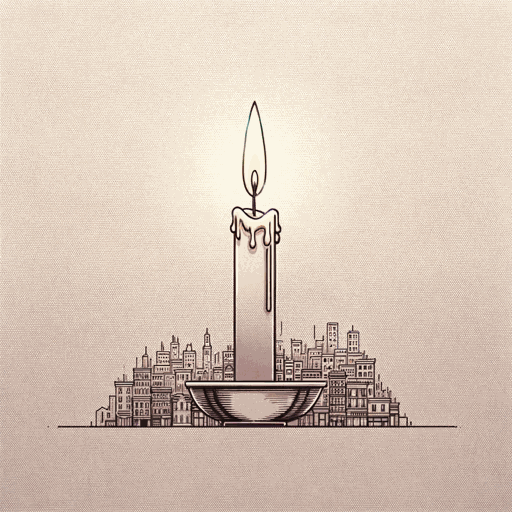24 pages • 48 minutes read
Mark TwainThe War Prayer
Fiction | Short Story | Adult | Published in 1905A modern alternative to SparkNotes and CliffsNotes, SuperSummary offers high-quality Study Guides with detailed chapter summaries and analysis of major themes, characters, and more.
Story Analysis
Analysis: “The War Prayer”
Mark Twain’s story can be read as an allegory with the characters acting as stand-ins for ideas. Through this lens, the stranger might represent pacifism or reason, while the church, standing in for society, represents ignorance and popular delusion. The story chiefly functions as social criticism with Twain relying on satire to make his points about the consequences of nationalism, the hypocrisy of organized religion, and the realities of war. He uses hyperbole, a key component of satire, to illustrate the patriotic fervor gripping the country, writing, “in every breast burned the holy fire of patriotism” (Paragraph 1). Irony, another component of satire, is exemplified by the church praying, in the name of love, for God to help them kill their enemies. Another example of irony is the church labeling the stranger a lunatic when, in actuality, he speaks the truth.
The story’s social criticism is further evident in its central conflict. On one side is the stranger, while on the other is the church. The stranger, on a mission to effect change, takes a stand for peace.
Related Titles
By Mark Twain

A Connecticut Yankee in King Arthur's Court
Mark Twain

A True Story
Mark Twain

Letters from the Earth
Mark Twain

Life on the Mississippi
Mark Twain

Roughing It
Mark Twain

The Adventures of Huckleberry Finn
Mark Twain

The Adventures of Tom Sawyer
Mark Twain

The Autobiography of Mark Twain
Mark Twain

The Celebrated Jumping Frog of Calaveras County
Mark Twain

The Gilded Age: A Tale of Today
Mark Twain, Charles Dudley Warner

The Innocents Abroad
Mark Twain

The Invalid's Story
Mark Twain

The Man That Corrupted Hadleyburg
Mark Twain

The Mysterious Stranger
Mark Twain

The Prince and the Pauper
Mark Twain

The Tragedy of Pudd'nhead Wilson
Mark Twain

